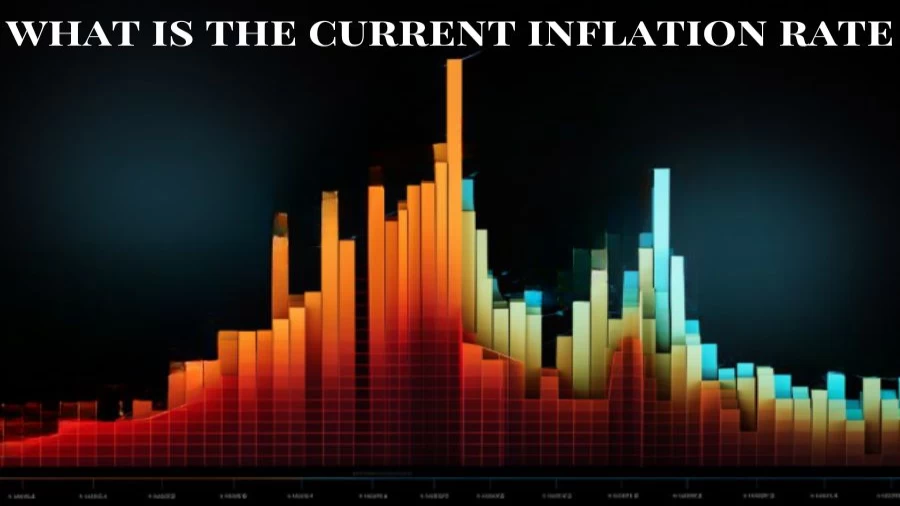
What is the Current Inflation Rate?
The US inflation rate currently stands at 3.18%, showing a rise from the previous month but remaining lower than the same month last year.
by Sai V
Published Aug 23, 2023 | Updated Aug 23, 2023 | 📖 9 min read
On This Page
What is the Current Inflation Rate?
The current inflation rate in the United States is recorded at 3.18%, marking a rise compared to the previous month's figure of 2.97%. However, this value stands notably lower than the inflation rate of 8.52% observed in the corresponding month the previous year. It's worth noting that the ongoing rate is beneath the long-term average of 3.28%.
The inflation rate in the US denotes the percentage by which a specific assortment of goods and services, purchased within the country, undergoes price escalation over a one-year period. This metric carries significant importance as it serves as a barometer for the overall health of the US economy. The US Federal Reserve employs inflation as a pivotal yardstick to evaluate the broader economic landscape.
|
Date |
Inflation Rate |
|
July 31, 2023 |
3.18% |
|
June 30, 2023 |
2.97% |
|
May 31, 2023 |
4.05% |
|
April 30, 2023 |
4.93% |
|
March 31, 2023 |
4.98% |
|
February 28, 2023 |
6.04% |
|
January 31, 2023 |
6.41% |
Inflation Rate 2021
The percentage by which prices of goods and services increased compared to the previous year, offering a comprehensive view of price dynamics beyond the average annual inflation rate. The inflation rate typically mirrors the ebbs and flows of the business cycle, the cyclical pattern of economic expansion and contraction.
|
Date |
Inflation Rate |
|
January 2021 |
1.40% |
|
February 2021 |
1.68% |
|
March 2021 |
2.62% |
|
April 2021 |
4.16% |
|
May 2021 |
4.99% |
|
June 2021 |
5.39% |
|
July 2021 |
5.37% |
|
August 2021 |
5.25% |
|
September 2021 |
5.39% |
|
October 2021 |
6.22% |
|
November 2021 |
6.81% |
|
December 2021 |
7.04% |
Inflation Rate 2022
The inflation rate in 2022, denoting a significant increase in the general price levels within that year. This rate of inflation has various economic implications, impacting purchasing power, interest rates, savings, and investments. Monitoring and responding to such changes is crucial for maintaining economic stability.
The inflation rate in 2022, denoting a significant increase in the general price levels within that year. This rate of inflation has various economic implications, impacting purchasing power, interest rates, savings, and investments. Monitoring and responding to such changes is crucial for maintaining economic stability
|
Date |
Inflation Rate |
|
January 2022 |
7.48% |
|
February 2022 |
7.87% |
|
March 2022 |
8.54% |
|
April 2022 |
8.26% |
|
May 2022 |
8.58% |
|
June 2022 |
9.06% |
|
July 2022 |
8.52% |
|
August 2022 |
8.26% |
|
September 2022 |
8.20% |
|
October 2022 |
7.75% |
|
November 2022 |
7.11% |
|
December 2022 |
6.45% |
Current CPI Inflation Rate
The most recent data reveals the Consumer Price Index for All Urban Consumers surged by 3.2 percent between July 2022 and July 2023. This marks a notable deceleration in comparison to the preceding year which saw an 8.5 percent increase culminating in July 2022. Delving into the components, food prices underwent a more pronounced uptick, ascending by 4.9 percent during the aforementioned one-year period.
Contrarily, energy prices embarked on a downward trajectory, diminishing by 12.5 percent. Notably, the gauge for all items except food and energy registered a 4.7 percent surge in prices, representing the most modest 12-month advancement observed since the stretch concluded in October 2021.The contemporary landscape of the Consumer Price Index portrays a 3.2 percent expansion in the wake of a year-long interval spanning from July 2022 to July 2023.
This ascent stands in stark contrast to the preceding year's 8.5 percent upswing that culminated in July 2022. Scrutinizing the constituents, the sector encompassing food encountered a more pronounced elevation, demonstrating a 4.9 percent upsurge during the aforementioned temporal scope.
Conversely, the energy sphere exhibited a contrasting descent, marked by a substantial 12.5 percent decline. Of significance, the metric excluding both food and energy items demonstrated a 4.7 percent upswing, signifying the most restrained 12-month progression noted since the period concluding in October 2021.
What Does the Term "Inflation" Refer to?
Inflation denotes the pace at which the costs of goods and services experience an elevation, leading to a gradual erosion in the purchasing capacity or worth of money over a span of time. This economic phenomenon casts an influence over a wide array of facets within our financial framework and day-to-day existence. The causes of inflation are multifaceted, and the recent uptick in inflation is ascribed, to some extent, to disruptions within supply chains, a surge in consumer demand following periods of restrictions, and economic stimulus measures enacted in response to the repercussions of the pandemic. These intertwined elements have collectively contributed to the ongoing upward trajectory in the prices of commodities and services.
"Inflation" signifies the rate by which the prices attached to goods and services witness an escalation, thereby precipitating a gradual decline in the spending potency or value of currency over an extended duration. This economic occurrence wields an impact across a diverse spectrum of sectors within our economic structure and everyday routines. The triggers behind inflation are varied, and the recent surge in inflation is linked, at least in part, to disturbances in supply chains, a pent-up surge in consumer demand following restricted periods, and economic stimuli enacted to counteract the consequences of the pandemic. These interwoven factors have collectively contributed to the ongoing upward trend in the pricing of commodities and services.
How Can Inflation Be Assessed?
An often-used method for assessing inflation involves the application of the consumer price index (CPI), which is formulated by the U.S. Bureau of Labor Statistics. This index quantifies CPI by monitoring the average shifts in prices paid for a diverse array of goods and services. These are categorized into eight groups: encompassing food, housing, apparel, medical care, recreation, transportation, education and communication, as well as other miscellaneous goods and services.
Additional yardsticks exist to provide insights into the inflation narrative, such as the personal consumption expenditures price index. The U.S. Bureau of Economic Analysis calculates the PCE index, which evaluates a distinct basket of goods and services compared to the assortment covered by the CPI.
You might come across terminology distinguishing between "headline" and "core" inflation. The former encapsulates the total inflation experienced over a designated timeframe. Conversely, core inflation endeavors to furnish a more accurate evaluation of inflation by excluding the influence of volatile food and energy prices, which have the propensity to oscillate significantly on a daily basis.
Past Inflation Rates in the United States
Examining the Consumer Price Index (CPI) over a three-decade span from 1989 to 2019 reveals an average annual inflation rate of 2.5%. This metric serves as an indicator of the gradual uptick in overall price levels during this period. Meanwhile, the Federal Open Market Committee (FOMC), the entity entrusted with the management of the U.S. money supply, has consistently aimed at maintaining a 2% inflation rate as a long-term target.
This deliberate approach to inflation management by the FOMC is designed to foster economic stability and growth.Differential inflation rates across diverse categories of goods and services are a noteworthy phenomenon. Sectors such as education and healthcare tend to experience inflation rates that surpass the average. For instance, according to insights from finaid.
org, an online platform offering financial aid counsel and resources, tuition fees in the United States have exhibited an annual increase of around 8%, significantly outpacing the broader inflation rate. Similarly, the Centers for Medicare & Medicaid Services have projected an average yearly growth rate of 5.1% in national health expenditure between 2021 and 2030, underscoring the accelerated pace at which healthcare costs are predicted to rise compared to general inflation.
Why is Inflation Significant?
Inflation holds a significant influence across an economy, as its repercussions are far-reaching. As prices climb, the value of money gradually erodes, resulting in a reduction in purchasing capacity over time. This underscores the imperative of countering, or at the very least keeping pace with, inflation, which forms a key motivation for engaging in financial investments.
Both consumers and businesses are attuned to the ramifications of inflation due to its impact on expenses and living standards. Enterprises meticulously monitor the costs of essential raw materials that contribute to their products, alongside the wages they must disburse to their workforce. Inflation, in turn, reverberates through tax rates, government outlays, interest rate levels, and various other aspects.
An optimal, consistent, or predictable degree of inflation is regarded as advantageous for an economy, as it signifies healthy demand for goods and services, indicative of growth. This prompts businesses to expand their production, thereby necessitating more staffing and culminating in heightened employment rates and wage increments. This interplay fosters a self-perpetuating cycle wherein workers' expenditures bolster demand further.
Nonetheless, inflation's trajectory becoming exceedingly high or exceedingly low can prove precarious, as it disrupts the equilibrium between supply and demand, thereby jeopardizing economic equilibrium. Consequently, this underscores the crucial role of investment. Despite accruing interest in a savings account, such returns typically pale in comparison to the inflation rate.
Hence, opting to invest one's resources, if financially viable, becomes prudent, fostering the appreciation of capital over time. This strategic approach ensures that the same quantum of commodities and services can be secured in the future. Consequently, when formulating a blueprint to realize financial objectives, it becomes imperative to factor in a realistic inflation rate for forthcoming expenses, thus guaranteeing adequate provisions to meet future needs.
How Can One Defend Against Inflation's Effects?
Preserving the value of your money amidst inflation requires strategic actions. Tony Molina, a senior product specialist at Wealthfront, highlighted in an email exchange the significance of avoiding excessive cash holdings. While the inclination to accumulate cash for security during uncertain times is natural, it's essential to recognize that inflation diminishes the purchasing power of money over time. Molina recommends allocating funds not slated for immediate use over the next three to five years into investments. This approach shields against the erosion of purchasing power.
- Real Assets: These encompass valuable resources like gold and real estate, known to retain their worth or gain pricing power during inflation. For instance, real estate owners often adjust rents as inflation escalates, maintaining their income's real value.
- Stocks: Prioritizing stocks with established earnings growth and minimal debt proves advantageous during inflationary periods. Escalating inflation tends to bring about higher interest rates, which can burden companies carrying substantial debt.
- Treasury Inflation-Protected Securities (TIPs): TIPs stand out as bonds indexed to the Consumer Price Index (CPI), tailored to safeguard investors against purchasing power loss. Unlike conventional bonds, which suffer from the inverse bond price-interest rate relationship during inflation, TIPs provide a hedge.
- Inflation-Linked Bonds: Similar to TIPs, I Bonds serve as an inflation-linked alternative to protect your purchasing power.
What is the Current Inflation Rate - FAQs
1. What is inflation?
Inflation is the gradual increase in the prices of goods and services, leading to a decrease in the purchasing power of money over time.
2. How is inflation measured?
Inflation is commonly measured using the Consumer Price Index (CPI), which tracks average price changes for various goods and services.
3. Why does inflation matter?
Inflation affects purchasing power, economic stability, and investment decisions, making it essential to monitor and manage.
4. What causes inflation to rise?
Factors like supply chain disruptions, increased consumer demand, and economic stimulus can contribute to rising inflation.
5. How can individuals protect against inflation?
Individuals can safeguard against inflation by investing in real assets like gold or real estate, prioritizing stocks with growth potential, and considering inflation-protected securities like TIPs or I Bonds.




